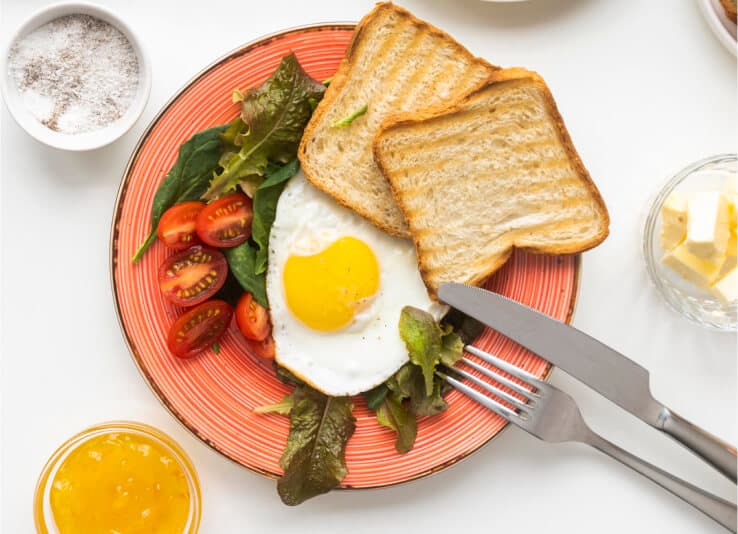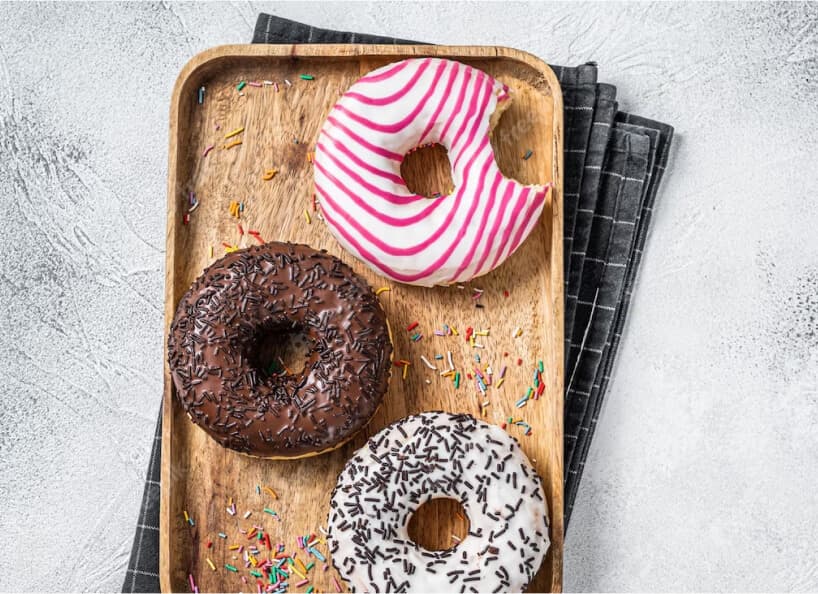Interpretation of the 2023 financial reports of 18 automakers: Total profit is less than 50 billion yuan
- 27 August, 2024
By the beginning of May, domestic automakers have basically released their 2023 financial reports. Gasgoo sorted out the 2023 financial report data of 18 automakers (mainly passenger car businesses) and found that due to factors such as price wars and the continued expansion of new energy, the net profit of automakers has changed significantly compared with the previous year:
First, a "dominant player" pattern has begun to emerge, with BYD retaining its position as the most profitable automaker; second, the overall growth rate of new energy automakers is higher than that of traditional automakers that mainly produce fuel vehicles or joint ventures; third, Dongfeng Motor Corporation suffered its first loss in a decade; fourth, new force Ideal has surpassed traditional automakers such as Changan and Great Wall to rank third in profitability; fifth, intensified competition has led to greater losses for some new energy automakers.

New energy head effect begins to emerge
At the beginning of last year, analysts at Gasgoo Automotive Research Institute said that affordable new energy vehicles have appeared in many segments, and all of them are hot-selling models. The new energy market pattern of 0-300,000 yuan has begun to emerge, among which SAIC-GM-Wuling and BYD have taken the lead. However, the market above 300,000 yuan was predicted to have no pattern yet.
After a year of development, Ideal Auto stood out in the new energy market above RMB 300,000, with annual sales of 376,000 units, far exceeding its competitors in the same level such as Weilai, Zeekr, and Avita. In the RMB 0-300,000 market, although strong new energy brands such as GAC Aion, Geely Galaxy, Changan Deep Blue, and Wenjie have emerged, SAIC-GM-Wuling and BYD still have a solid position.
But in comparison, at this stage, the only Chinese new energy brands that have achieved both volume and price growth are BYD and Ideal.
Comparing the sales and profit data of various domestic automakers in 2023, although SAIC-GM-Wuling sells one million vehicles a year, it is mainly aimed at the 100,000-level market and its high-end transformation is not smooth, resulting in limited profit margins. In addition, with the increase in competitive products in the market, its sales volume last year was 1.4 million vehicles, a year-on-year decrease of 12.3%; net profit was 1.8 billion yuan, a year-on-year decrease of 36.3%. Among all automakers, SAIC-GM-Wuling's profitability is not outstanding.
BYD, on the other hand, is the leader among traditional automakers, with sales of 3 million vehicles last year, up 61.9% year-on-year, and net profit exceeding 30 billion yuan, up 80.72% year-on-year. In 2022, the net profits of SAIC and BYD were both around 16 billion yuan. One year later, BYD became the only Chinese brand with new energy sales exceeding 3 million vehicles and profits exceeding 30 billion yuan.
Data shows that driven by its high-gross-margin brands such as Denza and Fangchengbao, BYD's net profit per vehicle reached 9,100 yuan last year, pushing the gross profit margin to 20.2%.
Although the sales volume of new car maker Ideal Auto was less than 400,000 last year, it achieved a net profit of 11.7 billion yuan, second only to BYD and SAIC Group. In particular, in the fourth quarter, Ideal's delivery volume and profit exceeded expectations, reaching 132,000 vehicles and 5.7 billion yuan respectively.
Like BYD, Ideal's net profit increased 6.8 times year-on-year last year, mainly due to the rapid growth in sales. But the difference is that Ideal focuses on the 300,000+ new energy market, so the profit margin is larger. In addition to the highly concentrated product line, high R&D input-output ratio, and low marketing and management expenses, Ideal's gross profit margin last year was as high as 22.2%, comparable to BBA luxury brands. The net profit per vehicle exceeded 30,000 yuan, ranking first among Chinese automakers.
Profit growth slows down for more than half of automakers
On the other side of the coin, more than half of the automakers are suffering from a slowdown or even decline in profit growth.
Among them, the performance of automakers with joint ventures is more obvious. For example, SAIC Group's revenue last year was 744.7 billion yuan, a slight increase of 0.09% year-on-year. The annual sales volume exceeded 5 million vehicles, ranking among the top domestic automakers in sales. However, the net profit was only 14.1 billion yuan, less than half of BYD, and fell 12.5% from the same period last year. SAIC Group's gross profit margin was 10.19%, lower than the industry average of 10.54%.
SAIC Motor's sales and profits declined, mainly due to the joint venture brands. Due to the impact of intensified industry competition and proactive price cuts to promote sales, the three joint venture brands of SAIC Volkswagen, SAIC GM and SAIC-GM-Wuling sold a total of about 3.6 million vehicles last year, a decrease of more than 470,000 vehicles from the previous year.
Due to the decline in profitability, the investment income of the two joint ventures, SAIC Volkswagen and SAIC GM, to SAIC Group was halved to 5.6 billion yuan, and the net profit per vehicle fell to about 2,500 yuan. Another joint venture brand, SAIC-GM-Wuling, contributed 930 million yuan to the group's profit, a decrease of 500 million yuan from 2022. The three joint venture brands account for 70% of SAIC Group's vehicle revenue.
Fortunately, the independent business has gradually supported sales, slowing down the decline in SAIC Group's profits. SAIC Group's independent sales in 2023 were 2.775 million vehicles, accounting for more than 55%, an increase of 2.5 percentage points year-on-year. Among them, new energy vehicle sales were 1.123 million, a year-on-year increase of 4.6%. With the support of the independent sector, SAIC Group's net profit decline narrowed from 34.3% in 2022 to 12.48% last year.
At the same time, the export performance is impressive, with sales exceeding 1.2 million vehicles last year, becoming a new growth engine for SAIC Motor. Data shows that its overseas market revenue last year reached 112 billion yuan, an increase of 34.4% over the previous year, accounting for 15% of the total revenue. In contrast, SAIC Motor's revenue in China fell slightly by 4.24%. The growth rate of overseas market revenue has driven the group's overall revenue to achieve positive growth.
Looking at GAC Group, its revenue increased by 17.6% to 129.7 billion yuan last year, and its sales volume also increased, but its net profit decreased by 45.08% to 4.429 billion yuan, which is only one-seventh of BYD's. There are many reasons for the decline in GAC Group's profits: first, the overall expense rate increased; second, the decline in subsidies for new energy vehicles and the price war in the automobile industry; third, the reduction in investment income of joint venture brands.
Specifically, GAC Group's R&D, sales and management expenses totaled 12.2 billion yuan last year, an increase of nearly 3 billion yuan from the previous year. In particular, sales expenses reached 6.2 billion yuan, a year-on-year increase of 58%. GAC Group explained that under the circumstances of new energy transformation, high-end brand promotion and overseas market expansion, its own brands increased their advertising and publicity expenses, while the increase in sales led to an increase in after-sales service fees and transportation and logistics costs.
While the profitability of independent brands needs to be improved, joint venture business continues to be under pressure. Last year, in order to maintain market share, GAC Honda and GAC Toyota increased their terminal promotion efforts, resulting in a decline in per-vehicle profits. According to Soochow Securities' calculation, the net profit of "the two Hondas" per vehicle last year was only 2,900 yuan (investment income/sales volume approximate calculation), a decrease of 40%.
The performance of another automaker, Dongfeng Motor Corporation, was even more unexpected, with its net profit suffering its first loss in a decade at -3.996 billion yuan, a year-on-year plunge of 138.9%.
The decline in passenger car sales and the impact of price wars are the main reasons for the decline in Dongfeng Group's profits. Last year, the group's independent passenger car sales were about 347,400 units, a year-on-year decrease of 30.2%.
At the same time, the joint venture business has been greatly squeezed and its market share has continued to decline. Dongfeng Group Co., Ltd. said that despite the adoption of flexible business policies and pricing strategies, the sales of joint venture business still fell by 15.6%. For example, some models of Dongfeng Peugeot Citroen Automobile have been reduced by more than 100,000 yuan, but the sales volume in 2023 was only 80,000 vehicles, a year-on-year decline of 35.8%.
Based on this, Dongfeng Motor Corporation's passenger car business revenue last year fell 8.96% year-on-year to only 42.543 billion yuan. In addition, Dongfeng Motor Corporation believes that the continued increase in investment in new energy and intelligent R&D, brand and channel construction is also one of the reasons for the profit loss. It is reported that the group's R&D expenditure in related fields has increased by about 177 million yuan compared with the previous year.
Dongfeng Group's profit did not collapse further last year, thanks to the "rebound" of its commercial vehicle business. The group's commercial vehicle sales last year were 343,400 units, a year-on-year increase of 10.3%, driving sales revenue to increase by 28.1% year-on-year to 49.538 billion yuan.
Similar to Dongfeng Group, some automakers such as Jiangling Motors and JAC Motors also benefited from the recovery of the commercial vehicle market and achieved improved performance. Among them, Jiangling Motors' net profit increased by 61.26% year-on-year to 1.476 billion yuan.
In addition, Geely, Great Wall, Weilai and other automakers are also generally troubled by the problem of increasing revenue but not profits. The reasons are different. Among them, traditional automakers such as Geely and Great Wall are mainly due to increased investment in the research and development and sales of new energy products. However, new energy brands such as Weilai, Xiaopeng, Seres and BAIC BluePark have not yet formed the scale effect.
How can car companies that rely on joint ventures survive this year?
As the scale of new energy continues to expand, domestic brands will erode the market share of joint venture brands at a faster pace.
Gasgoo Automotive Research Institute predicts that the sales volume of new energy passenger vehicles this year is expected to reach 11 million, a year-on-year increase of more than 20%, accounting for 35% of the market share. The sales volume of Chinese brands supported by new energy business will continue to grow, while the sales volume of joint venture brands that are extremely dependent on oil vehicles will further decline.
The market share of independent and joint ventures has reversed. With the strong offensive of Chinese brands led by BYD, the era of equal price of oil and electricity or even "lower price of electricity than oil" is accelerating. This means that new energy products, especially plug-in hybrid products, are replacing mainstream oil vehicles at a faster speed.
According to the China Passenger Car Association, the cumulative retail sales of domestic brands in the first quarter were 2.661 million vehicles, a year-on-year increase of 25.4%, higher than the overall growth rate (13.2%), and accounted for 55% of the market share. Foreign brands were generally sluggish, among which German brands only increased slightly by 4.2%, Japanese brands increased slightly by 2%, and other brands were almost all in a downward trend.
The slight increase in sales of German and Japanese brands is mainly due to the increased promotional discounts, in addition to the support of brand power. For mainstream gasoline cars such as Lavida and Sylphy, the terminal discounts are all over 20,000 yuan. In the short term, this ensures sales and market share, but in the long run, over-reliance on "price for volume" is not a good strategy and also damages profits. This can be seen from the changes in profits of car companies that rely on joint ventures in recent years.
For example, SAIC Motors has failed to meet its revenue and sales targets for six consecutive years, affected by the decline in sales of its two joint venture brands, SAIC Volkswagen and SAIC GM, and the price war. Its profitability has also declined sharply, with net profit falling from 36 billion yuan in 2018 to 14.1 billion yuan today, a drop of more than 60%.
It is foreseeable that since joint venture brands do not have a leading advantage in the field of electrification, the squeeze of joint venture gasoline vehicle market by Chinese brands in recent years is inevitable. Gasgoo Automotive Research Institute predicts that the market share of domestic passenger car brands will reach 62% this year and more than 70% in 2030.
For automakers with joint ventures, how to break the impasse is the key. The current solutions mainly include: strengthening independent businesses, accelerating the development of new energy, and transforming joint venture brands.
Taking SAIC Motor as an example, with the rise of its own-brand segment and the annual sales of millions in the new energy market, and the breakthrough of Zhiji brand in the high-end market, coupled with the continued outstanding performance of its export business, Soochow Securities predicts that SAIC Motor’s net profit this year is expected to reach 15.7 billion yuan, an improvement over last year.
In fact, as competition in the new energy market intensifies, not only joint venture brands are facing huge pressure, but Chinese brands are also extremely anxious. In order to maintain market share and sales, almost all car companies have adopted a price reduction strategy in the Chinese market. Companies with scale advantages and extreme cost control capabilities may be able to cope with it, but for new forces and traditional car companies that lack these advantages, it is undoubtedly a test of cash flow and reserves.
If nothing unexpected happens, the profitability of Chinese automakers may further diverge this year.
(The original title is "Financial reports of 18 automakers in 2023: total profit is less than 50 billion yuan", the content has been slightly deleted and modified)










0 Comments